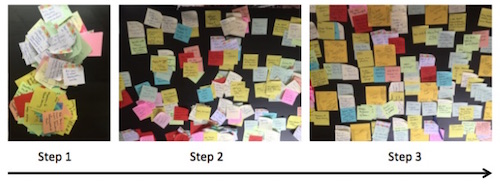

During the spring school semester of 2015, I observed a range of math classes at an urban public high school. I was motivated to study classroom teaching in light of a review paper I had completed on the impact of conceptual and procedural mathematics knowledge on strategic flexibility. The literature suggested that these three types of knowledge (conceptual, procedural, and strategy choice) are interconnected, and student weakness in one impacts overall math performance. Succinctly put, better teaching of all three types of knowledge improves math outcomes for students. In the course of the Field Based Experience (FBE), I noted in a daily diary the instructional activities for each class, especially how and if the teacher conveyed conceptual, procedural, and strategic information. In addition to this, while in the classroom, I also observed some of the student verbal responses when making successful connections. I was surprised by many findings. The teachers, regardless of the original material sourced (e.g., a textbook, slide presentation or worksheet), successfully used many scientifically based teaching approaches to cover the knowledge types associated with each mathematics topic. Another unexpected finding was how regularly both teachers and students pointedly discussed strategy choice across all levels of math classes. My main conclusion within the context of the classroom observation is that despite the consistent use of scientifically supported teaching methods, disparities in student responsiveness between upper and lower level classes remain. These disparities suggest that researchers may need to consider other factors influencing learning.
Presented October 18th, 2015 during the Program for Interdisciplinary Education Research Edbag series